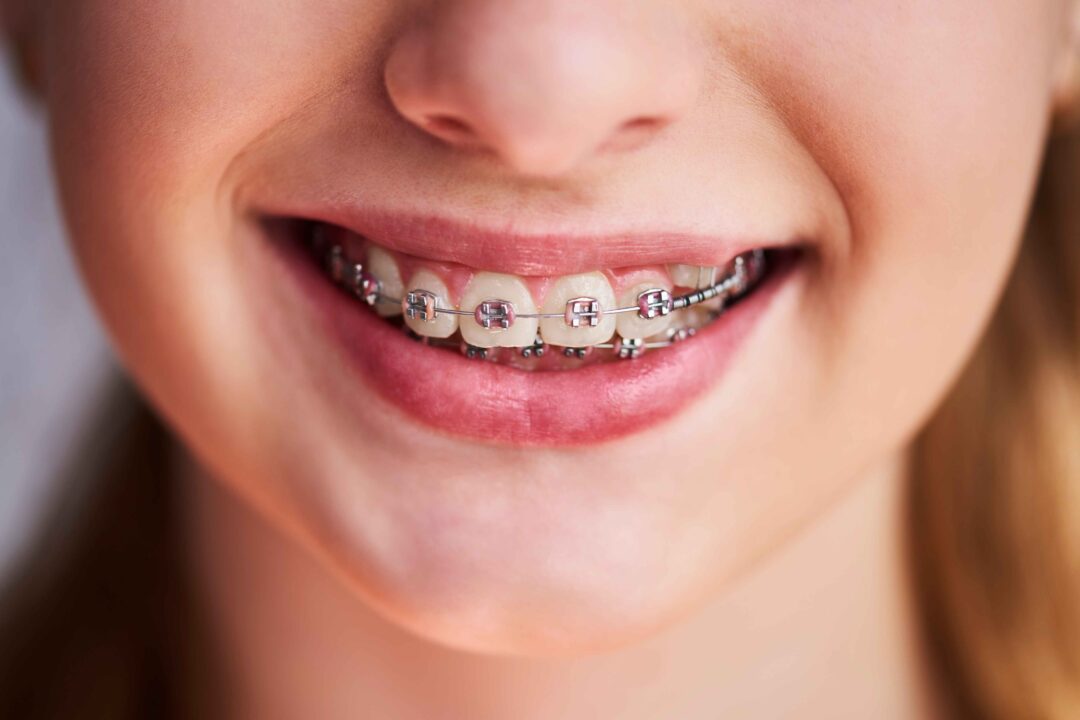How Long Will It Take To Straighten My Smile

A life-changing process!!! Did you know having a straight smile can truly be a life changer? Not only does it positively impact your oral health, but it also has a profound effect on your overall well-being. Misaligned teeth can lead to problems that affect your daily oral hygiene routine and make it more difficult to properly clean your teeth, leaving you susceptible to developing tooth cavities and gum disease.
But it’s not just about oral health – a straight smile encompasses several benefits. First and foremost, it improves your aesthetics. Braces are extraordinary in helping patients reach a balanced profile, and let’s face it, that feeling of confidence in our appearance by having a beautiful smile plays a significant role in that. It can boost your self-esteem and enhance your confidence.
From a financial perspective, investing in a straight smile now can save you from expensive corrective treatments in the future. For instance, let’s talk about teeth-wearing. Did you know that crooked teeth produce unwanted friction on certain parts of one or more teeth? Friction leads to cracks that ultimately could end in a major rupture compromising the tooth for extraction.
In short, preventing orthodontic issues early on is much more cost-effective than fixing them later when they become more complex. But yet, we understand making a decision of this kind requires analyzing several aspects, starting with your current finances and the cost of braces to considering how you will look for the months to come with your mouth full of metal.
Fortunately, straightening your teeth is easier and more discreet than ever. With options like Invisalign and ceramic braces, you can achieve a straight smile without the hassle and discomfort of traditional metal braces. These modern treatment options offer faster results, with an average treatment time of around 12 to 18 months.
To help you make an informed decision based on the options you have at hand, here we present to you some important FAQs about things you need to know to choose between Braces vs. Invisalign, including treatment effectiveness with regard to outcome timeframes. So, let’s get started.
How Do Braces and Clear Aligners Straighten Teeth?
Braces and clear aligners work by physics principles of “biomechanics” by applying controlled strain to your teeth and periodontal ligaments, gently guiding them to their planned and correct positions. Strain control is essential for producing safe small-scale displacements to avoid ligament damage and prevent teeth from loosening.
Now, here’s the thing – moving teeth safely takes time. It’s a gradual process that requires a bit of patience and commitment from you. Braces, with their brackets and wires, create a constant force, gradually moving your teeth into place. Clear aligners, on the other hand, use a series of custom-made, nearly invisible aligner trays to nudge your teeth bit by bit.
Both methods create a controlled environment that stimulates bone remodeling, allowing your teeth to shift. Changing tooth positions isn’t something that happens overnight. It typically takes months, sometimes even years, depending on your unique orthodontic needs, but the rewards are worth going through all its phases.
What Are the Phases of Orthodontic Treatment?
When embarking on your orthodontic journey, it’s essential to understand the different phases of treatment. Brace yourself (pun intended) for a breakdown of what lies ahead!
Phase 1: Planning
Dr. Reopelle will evaluate your teeth to create a personalized treatment plan. She’ll analyze your orthodontic issues and discuss the best treatment options for you, such as conventional braces or Invisalign aligners. Together, you’ll make a game plan for achieving straighter teeth and a beautiful smile!
Phase 2: Active Treatment
This is where the biomechanics science is set in action. Whether you opt for traditional metal braces or clear aligners, your teeth will be gradually moved into their desired positions. Through gentle and consistent pressure applied to each tooth, your orthodontic appliance will guide them into alignment.
Phase 3: Retention
After your teeth have been shifted into their new positions, it’s time to maintain the results. Retention involves wearing a retainer, a custom-made device that keeps your teeth in place. It ensures your teeth don’t move back to their original positions and allows your jawbone and muscles to adapt to the new alignment.
Here is an important note you must remember. The length of your treatment depends on various factors, such as the type of treatment, the severity of your orthodontic issues, and your compliance with wearing and caring for your appliances.
In fact, in very few cases, the periodontal ligaments do not react to stress as planned, and there might be some minimum plan modifications required to achieve optimal results. This could make treatment a little bit longer.
Incidentally, at a mature age, teeth are solidly affixed to the jawbone, making tooth movements more complex and requiring more time to achieve solid-rock results.
What Are the Types of Orthodontic Braces?
When it comes to straightening your teeth, there are a few different types of braces to consider. Let’s take a quick tour of each of them:
Traditional Metal Braces
These are the most common option and consist of metal brackets and wires. Today, we should mention that the amazing NiTi wires, which are also known as memory wires for their flexible mechanical properties, were developed during the aerospace age by NASA.
Brackets are also less conspicuous and have fewer nooks and crannies, making them easier to clean than before. Yet, braces developments go far beyond aesthetics. Today’s metal braces are more efficient in moving teeth than their predecessors.
They are highly effective and can treat even the most complex orthodontic issues. Indeed, metal braces have an important characteristic “They are sturdier” than other types of orthodontic appliances, which makes them perfect for solving malocclusion cases requiring increased strain.
Ceramic Clear Braces
Clear braces are similar to traditional metal braces, but the brackets are made from a transparent ceramic material developed by NASA that blends in with your teeth. Clear Invisible braces are far less noticeable but can break more easily, potentially delaying treatment times.
Invisalign
Invisalign Clear Alignment Systems has surpassed many people’s expectations in the last two decades. It became a popular alternative to braces. Instead of brackets and wires, Invisalign uses a series of clear plastic aligners to move your teeth gradually into place.
These aligners are removable, making oral hygiene easier, but they require strict compliance, as they must be worn for 20-22 hours per day. Invisalign is an excellent choice for mild to moderate orthodontic issues and can provide faster treatment times compared to traditional braces.
Faster treatment times are possible thanks to the traction technology used on the plastic aligners that snugly adapt to the dental arches and gum lines while producing a perfect grip on teeth, moving them efficiently.
Some mild cases might take only six months to get astonishing results, and moderate cases might range between 12-18 months.
How Long Does Orthodontics Treatment Take?
Giving you an exact timeframe for your orthodontic treatment is not a professional thing to do. There are several factors affecting the time of treatment, and some of them are difficult to take into account, like periodontal response to strain.
However, the most important factor to consider is the severity of your malocclusion (misalignment level and complexity) plays a big role. If you have a more complex case, it will likely take longer to correct. This could be influenced by the class and type of malocclusion you have.
Your age also factors into the equation. Adults typically have longer treatment times compared to younger patients, as their bones are more set in their ways. But this shouldn’t deter you from getting braces or clear aligners. No matter your age, you can still achieve a dreamt smile.
Another crucial factor is patient compliance with the orthodontist’s instructions. Remember, it’s important to follow their guidance and wear your braces or aligners as directed. This will help ensure that your treatment progresses as planned.
Your body’s unique response to treatment and your oral health can also play a role. Some people’s teeth move more quickly than others, and if you have any oral health issues, such as gum disease, that will need to be addressed before treatment can begin.
So, while we can’t give you a specific time frame, we might resume our annotations and tell you Invisalign is quite effective and rapid for mild to moderate malocclusion cases, making it a preferred choice for these cases.
Traditional Metal Braces might not be as quick as Invisalign, but it is the best option for severe malocclusion cases, and lately, braces evolved with components and biomechanical features that make them faster than previous versions.
Clear Ceramic Braces might take a little bit longer than metal braces and Invisalign, but they might be a preferred option for some patients looking for a less conspicuous orthodontic appliance.
Now That You Have the Facts, Its Time to Embark on a Journey to a Beautiful Smile
Invisalign Vs. Braces: Which Is The Right Choice For You? Don’t leave your smile up to chance! Schedule an appointment with Dr. Reopelle today to discover the best treatment option and take the first step toward a beautiful and confident smile.



